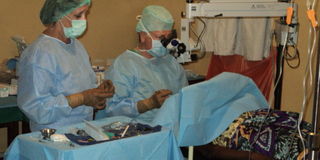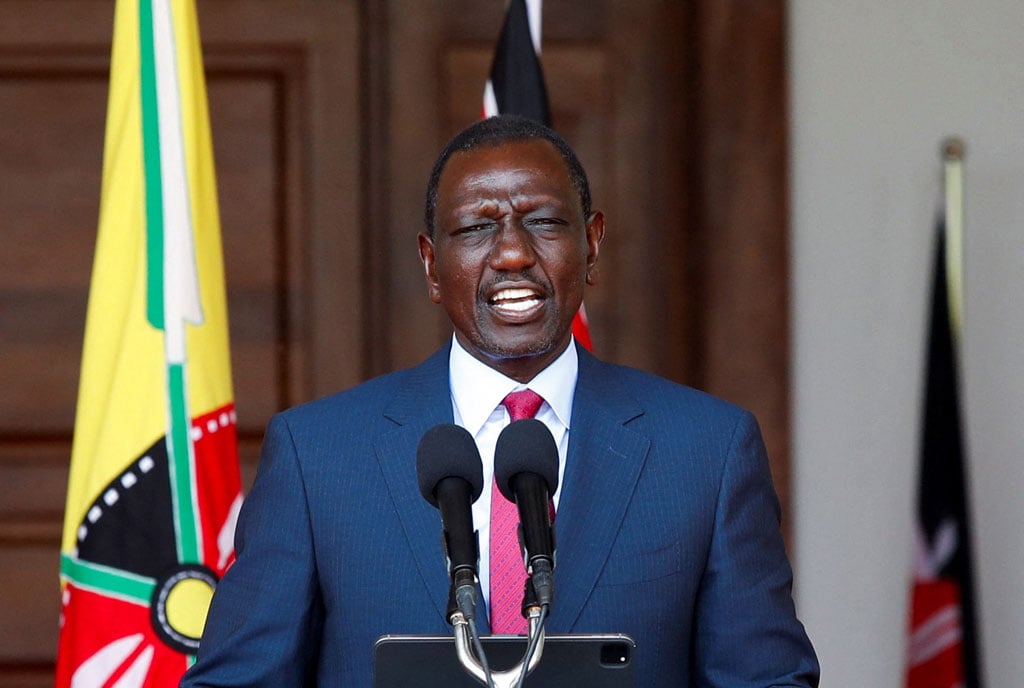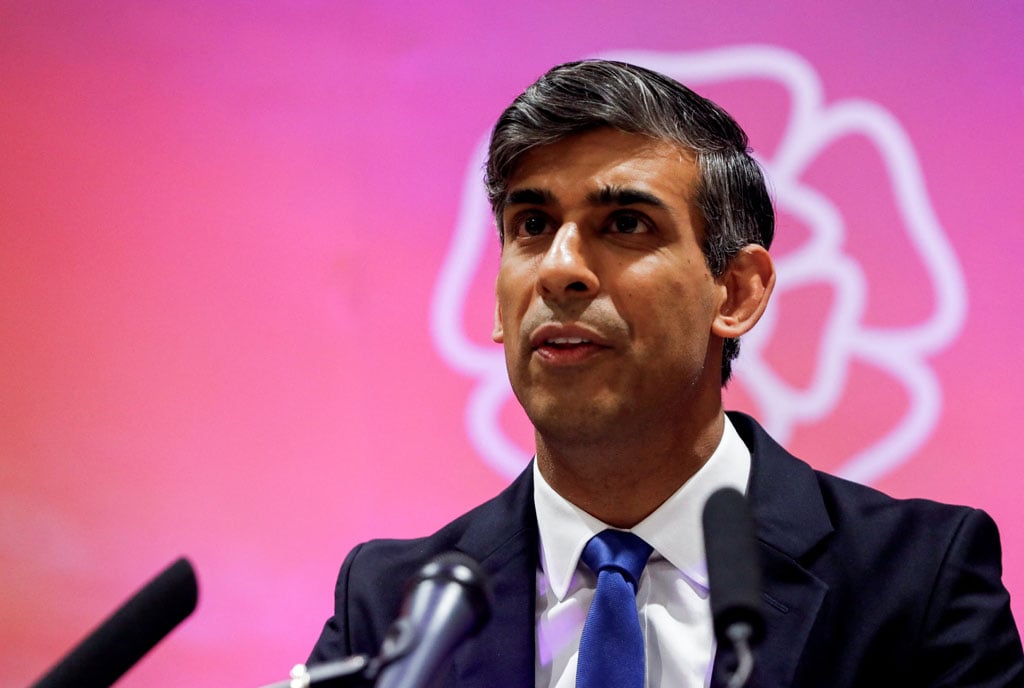Prime
Luweero hospital fails to operationalise eye unit

German eye surgeons conduct a surgery at Kasana Health Centre IV during an eye camp in 2018. PHOTO/ DAN WANDERA
What you need to know:
The hospital administration says the lack of specialised staff has limited them to prescriptions and referrals.
An eye clinic at Luweero General Hospital with an operating theatre and state-of-the-art- equipment has remained idle for three years due to lack of specialised staff, Daily Monitor has established.
The equipment at the eye clinic was a donation by a group of German eye surgeons who conducted a series of surgeries including sight correction in 2018.
Dr Innocent Nkonwa, the hospital medical superintendent, at the weekend said the eye clinic has remained nonfunctional due to lack of eye specialists such as ophthalmologists among other.
“Our recruitment structure as established by the Ministry of Health does not provide for the recruitment of specialised staff for the eye clinic. The eye specialists are only recruited at regional referral hospitals. This is the dilemma,” Dr Nkonwa said.
He added that some of the equipment at the facility is not available in many major hospitals across the country.
“We still have hope that at one time; the dream to have a fully operational eye unit will come to pass. Our problem is not the equipment and space but the specialised staff,” he explained.
Dr Nkonwa appealed to a team of district leaders visiting the facility who included the Luweero District chairperson, Mr Erusto Kibirango, and the District Woman MP, Ms Brenda Nabukenya, to engage the Ministry of Health top leadership to recruit the staff needed at the facility.
“We appeal to you, the district leaders, to play the other role including lobbying. This can be executed through engaging the higher authorities at the Ministry of Health,” Dr Nkonwa said.
He said the current staff at the eye clinic can only give prescriptions and advice patients to seek treatment from hospitals in Kampala.
Dr Nkonwa revealed that on average, the hospital receives 200 patients while 90 per cent are referred to other health facilities. In 2013, a group of German Eye Surgeons and health technicians shipped in an assortment of eye care equipment with a dream of setting up the first Ophthalmology Centre in Uganda, targeting an area that had registered a high rate of eye related health complications.
Dr Ralf Gerl, a German-based eye surgeon and team leader in an earlier interview, said their objective was to provide reading glasses, sight correction lences, and eye surgery to fight avoidable blindness.
Statistics at Luweero District Hospital reveal that more than 15,000 patients with eye complications from the different parts of the country received treatment from the eye surgery and treatment camps between 2013 and 2018.
The number of surgical eye operations including the cataract eye surgery was estimated at 500.
The German eye surgeons had partnered with the Uganda Health and Eye Care Association to offer free conventional eye care in line with the World Health Organisation (WHO) Vision 2020 that targeted a world free of avoidable blindness.
Dr Agaba Byamukama, the officer in-charge of Luweero Health Centre IV before it was elevated to a hospital, then told Daily Monitor that the establishment of the eye clinic was to set the ground for fully fledged Ophthalmology Centre.
“The German surgeons had already obtained clearance from the Ministry of Health and government as per the guidelines. It is true that Uganda has no special Ophthalmology Centre but eye surgery cases can be conducted at some of the regional hospitals including Mulago,” Dr Agaba, who is now the Nakasongola District Health officer, said.
Luweero District has 41 government health units categorised under Health Centre IVs, Health Centre IIIs and Health Centre IIs respectively. The hospitals include the Luweero Hospital, the Bombo Military General Hospital and Bishop Asili Hospital owned by the Kasana- Luweero Diocese.
STATISTICS
According to 2014 National Population and Housing Census, the district has a population of 456,958 and a total of 27,506 residents walk a distance of five kilometers to access medical care at the nearest publi health centre. Another 2,534 residents lack lavatory facilities which exposes them to diseases related to poor hygiene.





